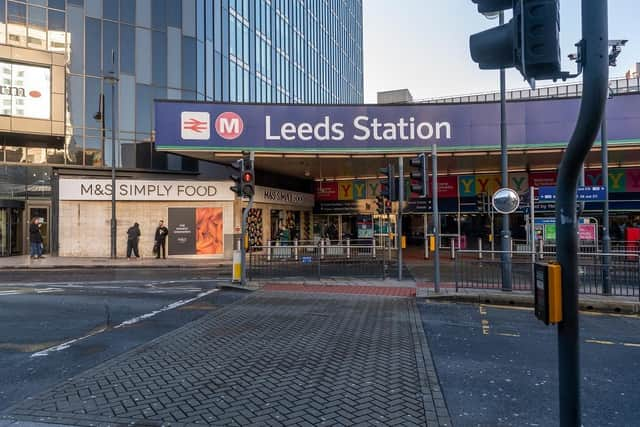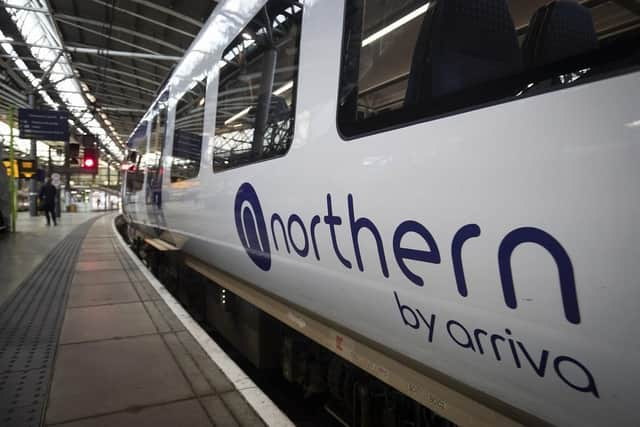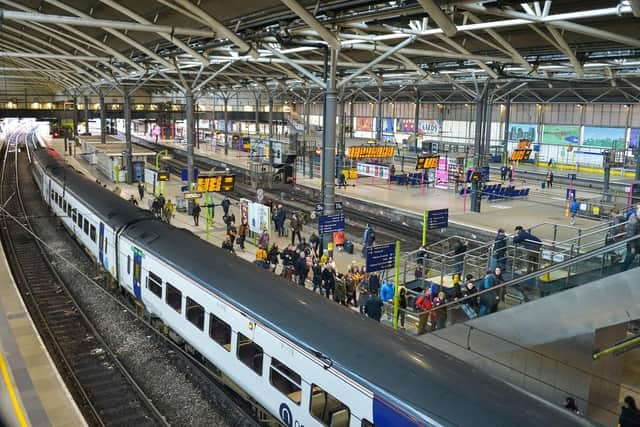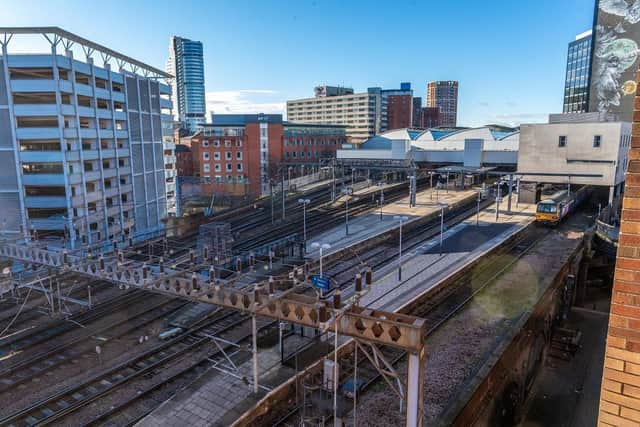Leeds station: The history of the West Yorkshire railway station including aftermath of Leeds Blitz and the progression of rail transport in the city since the 18th century
Leeds railway station is said to be the fourth-busiest train station in the UK outside of London as of March 2020 with more than 31 million passengers and is located on New Station Street in the city centre. It is one of 20 stations run by Network Rail.
Leeds is a major focal point for local and regional locations across Yorkshire including Harrogate, York, Scarborough, Hull, Doncaster and Sheffield. Leeds interchange provides one of the UK's first cycle hubs that permits a number of cycling services including repair, storage and rental. It first opened in summer 2010 and is designed to encourage visitors and commuters into Leeds to continue their journey from the railway station by bike.
Advertisement
Hide AdAdvertisement
Hide AdThe railway station is located on a hill falling from the south of the city to the River Aire and the Leeds and Liverpool Canal basin and has 18 platforms, which makes it the biggest in England regarding the number of platforms. Retail facilities within the station include coffee shops, fast food restaurants, a bar, newsagents, chemists and supermarkets. From the 1990s to 2008, Leeds train station had staffed ticket barriers, until they were replaced with automatic barriers by Northern Rail to reduce congestion at peak times.


History of Leeds train station
Railways in Leeds were first introduced in 1758, when parliamentary authority was approved for a wooden wagon-way to carry coal from Middleton to Leeds.
In the early years of railway progression, six different companies developed competing lines and different stations in and around Leeds.
The railways arrived in Leeds in 1834, when the Leeds, when the Leeds and Selby Railway, which later became part of the North Eastern Railway, was opened. It had a terminal at Marsh Lane east of Leeds city centre and in 1840, the North Midland Railway constructed its line from Derby through Rotherham to Hunslet Lane towards the south.


Advertisement
Hide AdAdvertisement
Hide AdIt had extended to a more centrally located terminus at Wellington Street in 1846, known as Welling Station. Another railway station, Leeds Central on Wellington Street opened in 1854 by the Manchester and Leeds Railway and the London and North Western Railway (LNWR).
The railway station became owned by both the LNWR and the North Eastern Railway, but other companies also held powers there including the Great Northern Railway and the Lancashire and Yorkshire Railway.
In 1869, both the LNWR and North Eastern railways opened Leeds New Station; on the south side of the Midland’s Wellington Station, New Station was built at a higher level and on a wider collection of arches, known as ‘The Dark Arches’, crossing the River Aire alongside Wellington Station.
The station was designed by the North Eastern Railway’s architect, Thomas Prosser, who built the station building and train shed. He was also responsible for the arches which supported New Station, and still do to this day.


Advertisement
Hide AdAdvertisement
Hide AdThe first set of improvements to the station took place in 1938, when the two railway stations were combined to form Leeds City Station. Today’s station was opened on May 2 that year. It was designed by LMS architect William Henry Hamlyn. The third railway station, Leeds Central, wasn’t impacted by the change. Part of Wellington railway station later became a parcels depot and the north concourse and the Queens Hotel were built around this time.
In March 1941, the Luftwaffe bombed various areas in Leeds, Armley, Beeston and Bramley during the Second World War, known as the Leeds Blitz. Leeds New Station was one of the main targets, along with Town Hall, Kirkgate Markets, the Central Post Office, the Quarry Hill flats, Hotel Metropole and part of the Inner Ring Road. The station was bombed and caused a number of casualties, although the exact number has not been confirmed and the station was later rebuilt.
The Transport Act 1947 nationalised almost all forms of mass transport in Great Britain and came into effect on January 1, 1948.
British Railways House, now known as City House, was added to the station in 1962 and architect John Poulson designed it, providing British Railways with administrative buildings. The building was criticised in 1967 by poet John Betjeman who claimed that it blocked all the light out of City Square. In 2010 the building was bought by property company Bruntwood.


Advertisement
Hide AdAdvertisement
Hide AdFurther renovation of the station building took place in 1967 and trains using Central Railway Station were diverted into the City Railway Station which became the main railway station serving the city.
The station had overhead electrification installed, when it was owned by British Rail, in 1988, for easy accessibility of the new Class 91 services on the East Coast main line.
Due to the station’s maximum capacity which was exceeded every day by the 1990s, the 1967 design was branded insufficient. Between 1999 and 2002, a major rebuilding project took place, titled Leeds 1st. This project saw the construction of additional tracks on the western side of the railway station, which advanced its efficiency by separating trains travelling to or from different locations and preventing them from having to cross each other.
Comment Guidelines
National World encourages reader discussion on our stories. User feedback, insights and back-and-forth exchanges add a rich layer of context to reporting. Please review our Community Guidelines before commenting.
